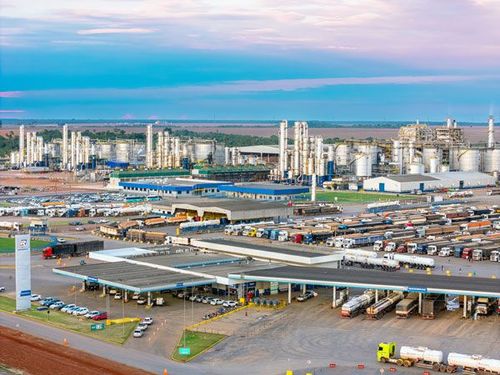Grain Ethanol Grows Amidst the Cane

Brazil’s corn ethanol production has surged from 431 million liters in 2018 to over 6 billion liters in the 2024-25 crop year, now comprising 18-20% of total ethanol output. This growth is driven by agricultural prowess and favorable policies, such as the RenovaBio Law. Brazil also increased sugarcane ethanol production, while new plants and financial support continue to expand the industry.
In 2018, Brazil produced 431 million liters (113.9 million gallons) of corn ethanol. For the 2024-’25 crop year (April to March), the country is expected to produce north of 6 billion liters (1.6 billion gallons). Corn ethanol now accounts for 18% to 20% of Brazil’s total ethanol production, up from about 2% in 2018.
“It’s a remarkable growth—stunning growth,” says Hagan Rose, director of international sales and marketing for Eco-Energy.
The expansion is not relegated to just corn ethanol, as Brazil has also increased its sugarcane ethanol production from 25 billion liters (6.6 billion gallons) to 33.5 billion (8.8 billion gallons) in the same time period. Rose says that’s also “good growth.”
Brazil’s Ministry of Mines and Energy says the country saw a 48% increase in production capacity between 2018 and 2023 alone. “With the approval by the National Congress of the RenovaBio Law, the receptivity on the part of the productive agents and the expectation of an increase in market share brought the favorable environment for new investments in the expansion of the production capacity of biofuels in the country,” the MME wrote in a response to questions from Ethanol Producer Magazine.
Rose has theories for ethanol’s growth in Brazil, as does David Lococo, president and CEO of Katzen, a U.S.-based technology design and engineering firm that recently completed the world’s largest dry mill corn ethanol plant for Brazil’s largest corn ethanol producer, INPASA (Industria Paraguaya de Alcoholes S.A.). Both emphasize agricultural prowess and volatile sugarcane prices.
All that increased production will be necessary, as Brazil boosts its blending mandate to 35% under RenovaBio. Still, both Rose and Lococo say they remain bullish on U.S. ethanol for world exports, with no concerns that Brazil’s new supply will edge the U.S. out of the world market in the near-term.
New Development
INPASA’s new production came online at its Sinop, Mato Grosso, location in 2024, boosting its capacity to more than 6,000 cubic meters per day, 2.1 billion liters annually (554.7 MMgy), Lococo says. “That makes it the largest dry mill corn ethanol plant that we know of, anywhere.”
Katzen initially began working with INPASA in Paraguay a few years ago to help design a retrofit for its distillation system, to include a molecular sieve. “That project was very successful, they were pleased with our performance and they asked us to build a brand new standalone plant in Paraguay. From that, we co-developed a strategy for fermentation and distillation and evaporation that was very profitable and worked very well. And they decided that the future of ethanol was bright for them, but the future of ethanol in the short-term was Brazil, so they opened operations in Brazil.”
INPASA has 14 plants in Brazil and accounts for more than 50% of the country’s corn ethanol production capacity. Katzen has three more corn ethanol projects in the works with INPASA, as well as a project with a company out of southern Brazil named 3tentos that is expected to come online in November 2025. Even new producers are reaching out to Katzen, interested in traditional corn ethanol.
“We’re actively pursuing expansion in Brazil because Brazil is definitely growing its market for corn ethanol,” Lococo says. “The market is growing tremendously.”
In addition, the Brazilian Development Bank (BNDES) recently announced financial support for two corn ethanol plants, together boosting production capacity by 130 MMgy. BNDES will contribute R$500 million ($87.86 million) to a project under development by Alvorada Bioenergia, part of the Alvorada Agricultural Group, in Canarana, Mato Grosso. Another R$500 million will go toward a Campo Mourão, Paraná, facility under development by Coamo Agroindustrial Cooperativa.
To read more about Ethanol Industry & Bio Energy News, continue reading Agriinsite.com















